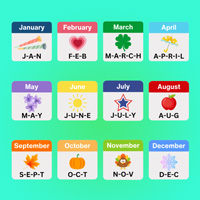All Articles
Update to Android Mobile App
We just updated the Signing Savvy Member App on Android to version 1.2. The new app resolves an issue that was making it difficult for some users to login to the app. The issue was that Android was auto-correcting what you typed as a password (thinking it was just regular text). The updated app no longer auto-corrects (changes what you type) on the password field. We also made a few additional bug fixes in the app. ...
Fostering communication between school and home at the elementary level
This blog is part of a series of Teaching Tips for teachers of deaf and hard of hearing students. However, many of the ideas would work well in ANY teaching situation where you are working with children and parents (families).
We will begin at the ground level with an elementary level suggestion for improving literacy and work our way up to other grade levels in later blogs.
This suggestion works on the basis that children learn better when they are involved in ...
Fostering communication between school and home
Many people who have worked in the field of Deaf Education have had to deal with an alarming statistic that has plagued the field for a long time. The average reading level of the exiting or graduating deaf senior is that of a 4th grader. It has fluctuated over the years but for the most part it is still much lower than any of us would care to accept.
I have heard many different explanations as to why this ...
Update to Mobile Apps
There is a new version (v1.1) of the Signing Savvy Member App available now for Android devices. The new versions fixes several bugs that were in the initial release of the Android app (hopefully it greatly reduces the crashes)! The Android app also improves the interface layout if you are using an Android tablet, such as the Samsung Galaxy tab.
UPDATE - There is also a new version (v1.2) of the Signing Savvy Member App available now for Apple iOS ...
Turn an Ordinary Children's Book into a Creative Sign Language Learning Tool
Children's books are often great learning tools because they are visual, help build a child's vocabulary, and kids love them! I use them all the time in my teaching to young students. Now, with Signing Savvy and a bit of creativity, you can create a sign language version of your favorite children's books to further enhance their learning potential.
Below is an example of a very well known children's classic that has been modified to show the signs.
To create this book, ...
Still time to tap into that summer creativity!
Teachers, I know you are all enjoying your summers and don\'t really want to think about \"Back to School\" just yet, but I thought I would take the time, over the next few blog posts, to highlight some of the cool things you can do with the Signing Savvy features to add a little creativity to your ...
Move Complete
Everything now should be transitioned to the new server and working (both the website and iOS and Android mobile apps). The update should increase performance and overall make Signing Savvy a bit more snappy.
If you do experience a problem, feel free to contact ...
Moving Day Approaches
We will be moving Signing Savvy to a new server this weekend. This may cause the site to be inaccessible for several hours. In reality, the transition should be much quicker (a few hours). We will begin the process late Friday evening when not many are relying on the site to minimize the downtime.
Once the transition is complete, the new server will provide increased performance and a more reliable service for you.
NOTE: The move will also benefit ...
Signing Savvy Member App Now on Android
We have been working hard on the Android version of the Signing Savvy Member App to make it as feature rich as its iOS counterpart. Well, we are happy to announce that version 1.0 of the Android version is now available!
Just like the iOS version, the Android version of the Signing Savvy Member App is free for full members of Signing Savvy (available on the Android Market for Android 1.6 and newer devices). Just like the website, the app ...
Signing Savvy Member App Available for iOS Devices
After a great deal of work, we are happy to announce that version 1.0 of the Signing Savvy Member App is now available for Apple iOS mobile devices (iPhone, iPad, and iPod Touch)!
The Signing Savvy Member App is free for full members of Signing Savvy (available on the Apple App Store). Just like the website, the app includes the ability to search for and view thousands of high-quality sign videos, build your own vocabulary word lists and share them with ...
ADVERTISEMENTS







